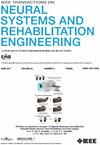Explainable Depression Classification Based on EEG Feature Selection From Audio Stimuli
IF 4.8
2区 医学
Q2 ENGINEERING, BIOMEDICAL
IEEE Transactions on Neural Systems and Rehabilitation Engineering
Pub Date : 2025-04-02
DOI:10.1109/TNSRE.2025.3557275
引用次数: 0
Abstract
With the development of affective computing and Artificial Intelligence (AI) technologies, Electroencephalogram (EEG)-based depression detection methods have been widely proposed. However, existing studies have mostly focused on the accuracy of depression recognition, ignoring the association between features and models. Additionally, there is a lack of research on the contribution of different features to depression recognition. To this end, this study introduces an innovative approach to depression detection using EEG data, integrating Ant-Lion Optimization (ALO) and Multi-Agent Reinforcement Learning (MARL) for feature fusion analysis. The inclusion of Explainable Artificial Intelligence (XAI) methods enhances the explainability of the model’s features. The Time-Delay Embedded Hidden Markov Model (TDE-HMM) is employed to infer internal brain states during depression, triggered by audio stimulation. The ALO-MARL algorithm, combined with hyper-parameter optimization of the XGBoost classifier, achieves high accuracy (93.69%), sensitivity (88.60%), specificity (97.08%), and F1-score (91.82%) on a auditory stimulus-evoked three-channel EEG dataset. The results suggest that this approach outperforms state-of-the-art feature selection methods for depression recognition on this dataset, and XAI elucidates the critical impact of the minimum value of Power Spectral Density (PSD), Sample Entropy (SampEn), and Rényi Entropy (Ren) on depression recognition. The study also explores dynamic brain state transitions revealed by audio stimuli, providing insights for the clinical application of AI algorithms in depression recognition.基于音频刺激的脑电特征选择的可解释抑郁症分类。
随着情感计算和人工智能(AI)技术的发展,基于脑电图(EEG)的抑郁症检测方法被广泛提出。然而,现有的研究大多集中在抑郁症识别的准确性上,忽视了特征与模型之间的联系。此外,关于不同特征对抑郁症识别的贡献的研究还很缺乏。为此,本研究引入了一种利用脑电图数据进行抑郁症检测的创新方法,将蚁狮优化(ALO)和多智能体强化学习(MARL)相结合进行特征融合分析。可解释人工智能(XAI)方法的引入增强了模型特征的可解释性。采用时延嵌入式隐马尔可夫模型(TDE-HMM)来推断音频刺激引发抑郁时的大脑内部状态。结合XGBoost分类器的超参数优化,ALO-MARL算法在听觉刺激诱发的三通道脑电数据集上取得了较高的准确率(93.69%)、灵敏度(88.60%)、特异性(97.08%)和f1评分(91.82%)。结果表明,该方法在该数据集上优于最先进的抑郁症特征选择方法,并且XAI阐明了功率谱密度(PSD),样本熵(SampEn)和rsamenyi熵(Ren)的最小值对抑郁症识别的关键影响。该研究还探索了音频刺激所揭示的动态大脑状态转换,为人工智能算法在抑郁症识别中的临床应用提供了见解。
本文章由计算机程序翻译,如有差异,请以英文原文为准。
求助全文
约1分钟内获得全文
求助全文
来源期刊
CiteScore
8.60
自引率
8.20%
发文量
479
审稿时长
6-12 weeks
期刊介绍:
Rehabilitative and neural aspects of biomedical engineering, including functional electrical stimulation, acoustic dynamics, human performance measurement and analysis, nerve stimulation, electromyography, motor control and stimulation; and hardware and software applications for rehabilitation engineering and assistive devices.

 求助内容:
求助内容: 应助结果提醒方式:
应助结果提醒方式:


